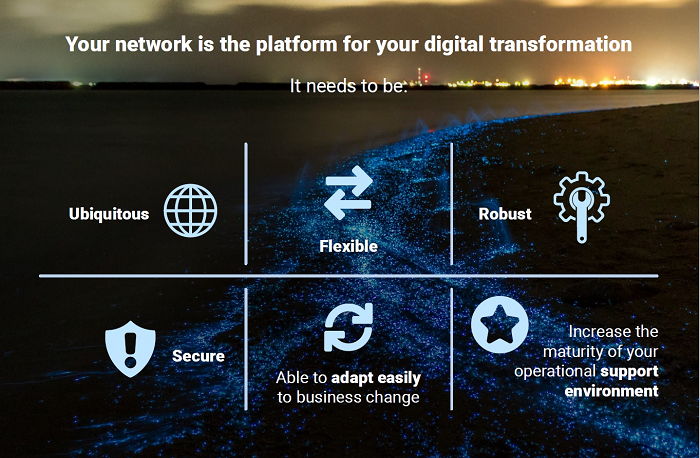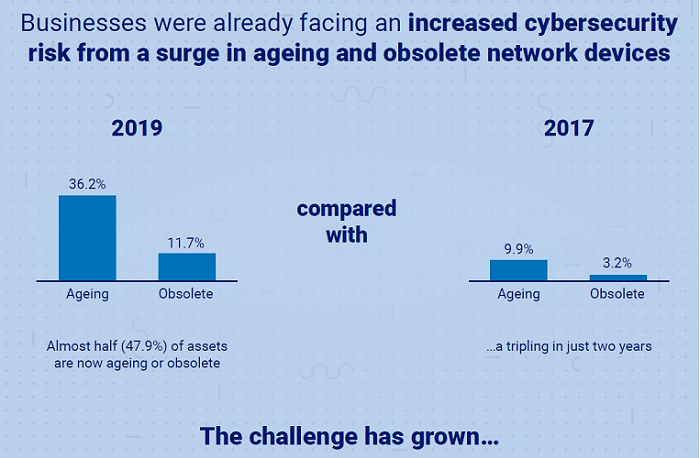NTT 2020 GNI Report: Businesses face cybersecurity risk due to surge in remote working & obsolete devices on network
By Digital News Asia June 12, 2020
- 46.3% of organisations’ assets are ageing/obsolete, a huge surge from 4.3% in 2017
- Secure infrastructure needed with organisational changes in the ‘new normal’

NTT Ltd’s 2020 Global Network Insights Report found that as businesses increasingly move applications to multi-cloud environments, investment in the cloud is outpacing their on-premises infrastructure speed.
This has caused refresh and upgrade patterns to slow down, with many businesses choosing to continue to sweat network assets and to slow investment in re-architecting their on-premises network and security infrastructure.
As a result, there is now an increase in obsolete and unpatched network devices containing vulnerabilities, which introduces cybersecurity risk and exposing organisations to informed security threats.
The report, based on data from technology assessments conducted on more than 1,000 clients covering over 800,000 network devices, found 46.3% of organisations’ network assets were ageing or obsolete. This was a huge surge from 2017, which recorded 4.3%.
The report additionally notes that the Covid-19 pandemic and consequent surge in bandwidth consumption is putting strain on the network, which compounds existing challenges and thus “creating a perfect storm”.
Plus, with an increase in remote working, remote access and consumption of voice and video services, organisations’ network and security infrastructure are under growing pressure.
“In this ‘new normal’ many businesses will need, if not be forced, to review their network and security architecture strategies, operating and support models to better manage operational risk. We expect to see strategy shift from a focus on business continuity to preparation for the future as lockdown begins to ease,” says NTT Ltd’s executive vice president of Intelligent Infrastructure Rob Lopez.
“Network infrastructure needs to be appropriately architected and managed to deal with unplanned surges, which will require a relook at cloud and on-premises infrastructure to reduce the impact and frequency of business-critical outages.”
The security risks
According to the report, obsolete devices have, on average, twice as many vulnerabilities per device (42.2 instances per device) when compared with ageing (26.8) and current ones (19.4), creating unnecessary risk.
This risk is exacerbated further when businesses do not patch a device or revisit the operating system version for the duration of its lifetime. The report notes that although patching is relatively simple, and often free under a maintenance agreement or extended warranty, many businesses still don't patch their devices.
The ongoing pandemic is set to introduce permanent changes to the way businesses operate – the report offers examples including accommodating social distancing within physical offices and embracing remote working, as well as co-working spaces and open office adoption. As such, a novel approach to all network architecture will be needed.
The report states that businesses will require the tools, knowledge and expertise to re-architect the network for the short, mid and long-term evolution of the ‘new normal’. To do so, they will need to find strategic partners who can guide them.

In short, businesses will need to embrace digital transformation in order to improve customer and employee experience in a during-and-post-pandemic world, and these initiatives can only be accelerated with the support of relevant, secure infrastructure.
Lopez adds: “The network is the platform for business digital transformation. It needs to be ubiquitous, flexible, robust and secure to adapt easily to business change, while increasing the maturity of the operational support environment. Businesses that use a high-level of network automation and intelligence to optimize operations will gain a significant competitive advantage and realise the benefits of the cloud economy, securely.”


